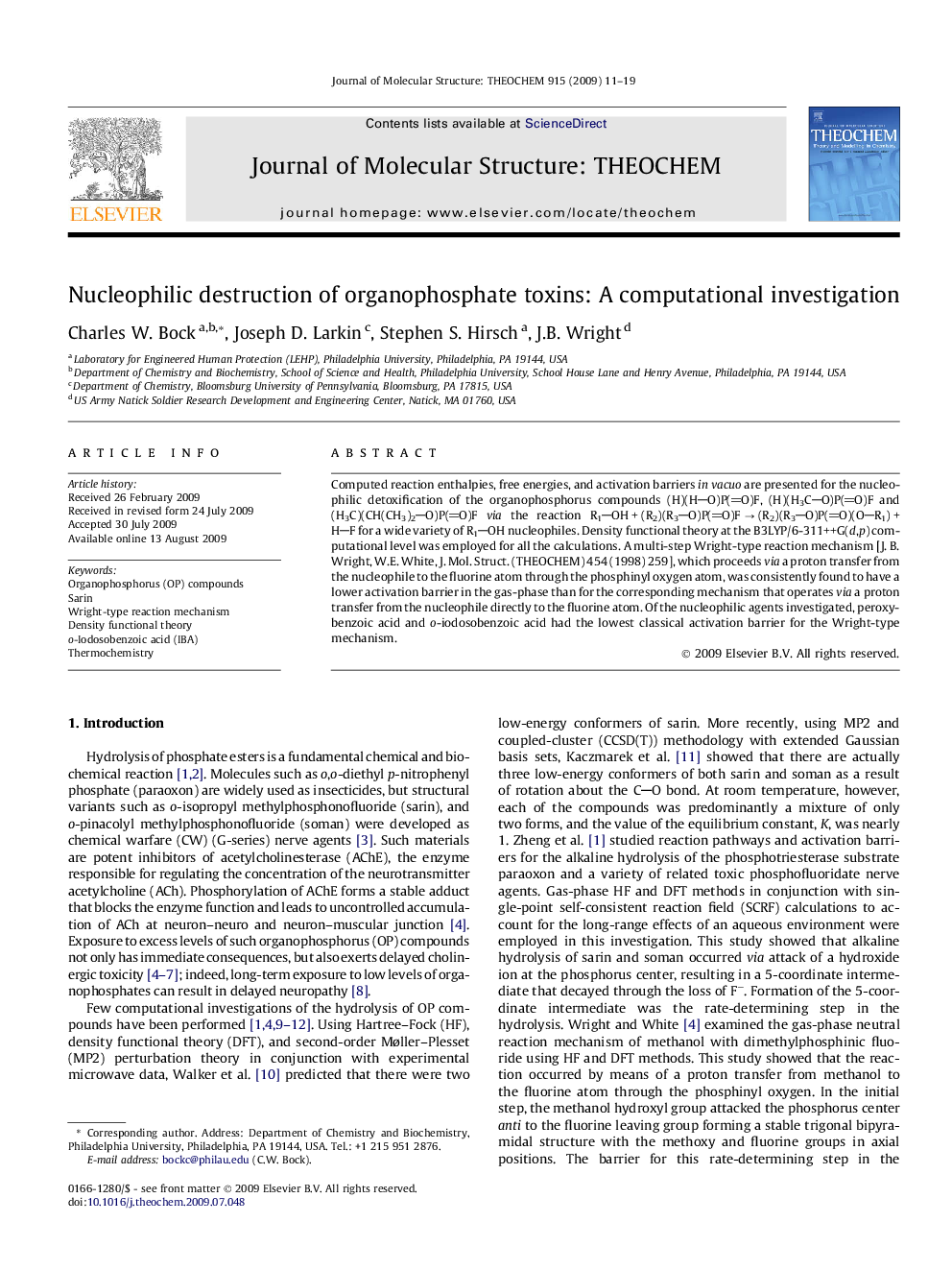| Article ID | Journal | Published Year | Pages | File Type |
|---|---|---|---|---|
| 5417137 | Journal of Molecular Structure: THEOCHEM | 2009 | 9 Pages |
Abstract
Computed reaction enthalpies, free energies, and activation barriers in vacuo are presented for the nucleophilic detoxification of the organophosphorus compounds (H)(HO)P(O)F, (H)(H3CO)P(O)F and (H3C)(CH(CH3)2O)P(O)F via the reaction R1OH + (R2)(R3O)P(O)F â (R2)(R3O)P(O)(OR1) + HF for a wide variety of R1OH nucleophiles. Density functional theory at the B3LYP/6-311++G(d,p) computational level was employed for all the calculations. A multi-step Wright-type reaction mechanism [J. B. Wright, W.E. White, J. Mol. Struct. (THEOCHEM) 454 (1998) 259], which proceeds via a proton transfer from the nucleophile to the fluorine atom through the phosphinyl oxygen atom, was consistently found to have a lower activation barrier in the gas-phase than for the corresponding mechanism that operates via a proton transfer from the nucleophile directly to the fluorine atom. Of the nucleophilic agents investigated, peroxybenzoic acid and o-iodosobenzoic acid had the lowest classical activation barrier for the Wright-type mechanism.
Related Topics
Physical Sciences and Engineering
Chemistry
Physical and Theoretical Chemistry
Authors
Charles W. Bock, Joseph D. Larkin, Stephen S. Hirsch, J.B. Wright,
